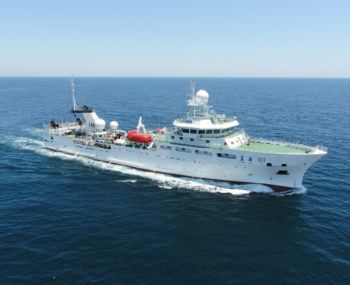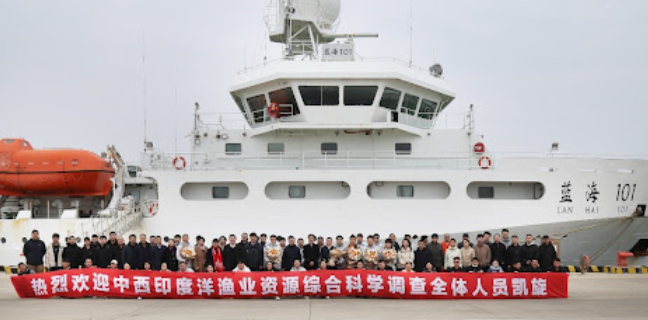|

The most studied species are squid and tuna in order to meet the demand of the Chinese fishing fleet that operates in that area.
China wraps up fishery resource survey in Indian Ocean with abundant marine data and samples
 CHINA
CHINA
Wednesday, April 03, 2024, 01:00 (GMT + 9)
Two Chinese-built research vessels completed an exhaustive survey of fishery resources in the Indian Ocean, filling a crucial void in China's understanding of offshore fishery resources.
The research vessels, the Lanhai 101 (Blue Ocean) and Lanhai 201, have returned to their home ports in Qingdao and Shanghai respectively, after completing a 110-day voyage covering approximately 20,000 nautical miles and encompassing 103 sampling stations in the northwestern part of the Indian Ocean.

A remarkable 112 species of fishery organisms, ranging from tuna to marlin, were cataloged and collected during this expansive survey.
The research team obtained valuable data on upper-layer fish, cephalopods, and crustaceans in the survey area. Additionally, data and samples were collected on plankton, fish eggs and larvae, as well as the water environment.
The vessels obtained a large number of marine biological specimens, which will provide valuable resources for Chinese scientists in ocean biology sample research and development.

One of the highlights is that a large specimen of the Indian Ocean sunfish weighing up to 500 kilograms was captured.
Jin Yue, chief scientist on Lanhai 101 said "the collection of these species will provide vital support for the preservation of genetic resources and the cultivation of new varieties in the future."
Zhao Xianyong, a researcher at the Yellow Sea Fisheries Research Institute of the Chinese Academy of Fishery Sciences, noted the expedition not only filled the void in China's understanding of offshore fishery resources, but is of great importance for the sustainable development of offshore fisheries and the protection of marine biological resources.

Some key samples will be transferred to the National Fishery Biological Germplasm Resource Bank for standardized long-term preservation, for use in scientific research and the development of new aquaculture species.
The vessels are currently the largest and most advanced ocean fishery research vessels in China, with 84.50 meters long, has a main engine power of 2,720 kilowatts, a gross tonnage of 2,783, an endurance of 10,000 nautical miles, a maximum speed of 14.5 knots, a self-sustainability of 60 days, and a capacity of 60 people.
"The vessel has strong wind and wave resistance, with a self-sustaining capacity of 60 days and can accommodate 60 people for scientific research," said Jin. "It is equipped with mid-upper trawl nets, as well as longline and squid fishing operations for surveys."

The research vessel has four major scientific survey systems: fishery resources survey, environmental ecological survey, ocean physical and chemical analysis, audio and video assessment and remote sensing and it has ranked among the world's advanced scientific research ships.
Source: GGTN
[email protected]
www.seafood.media
|



